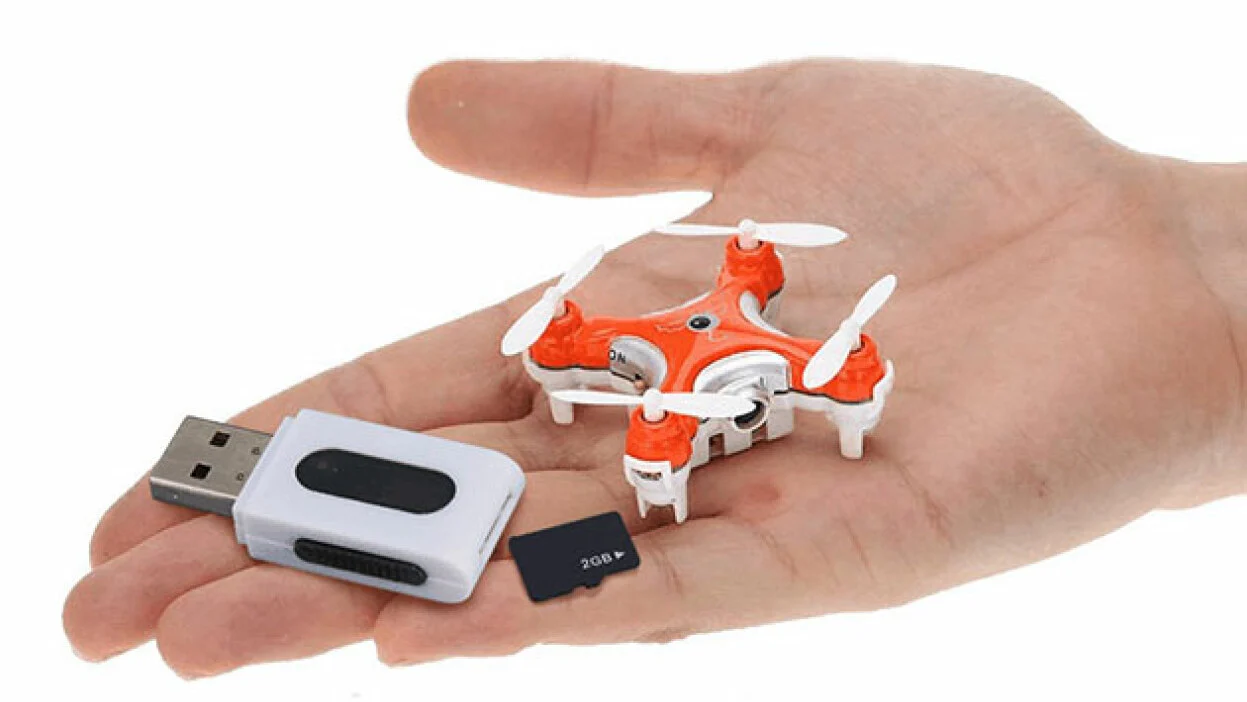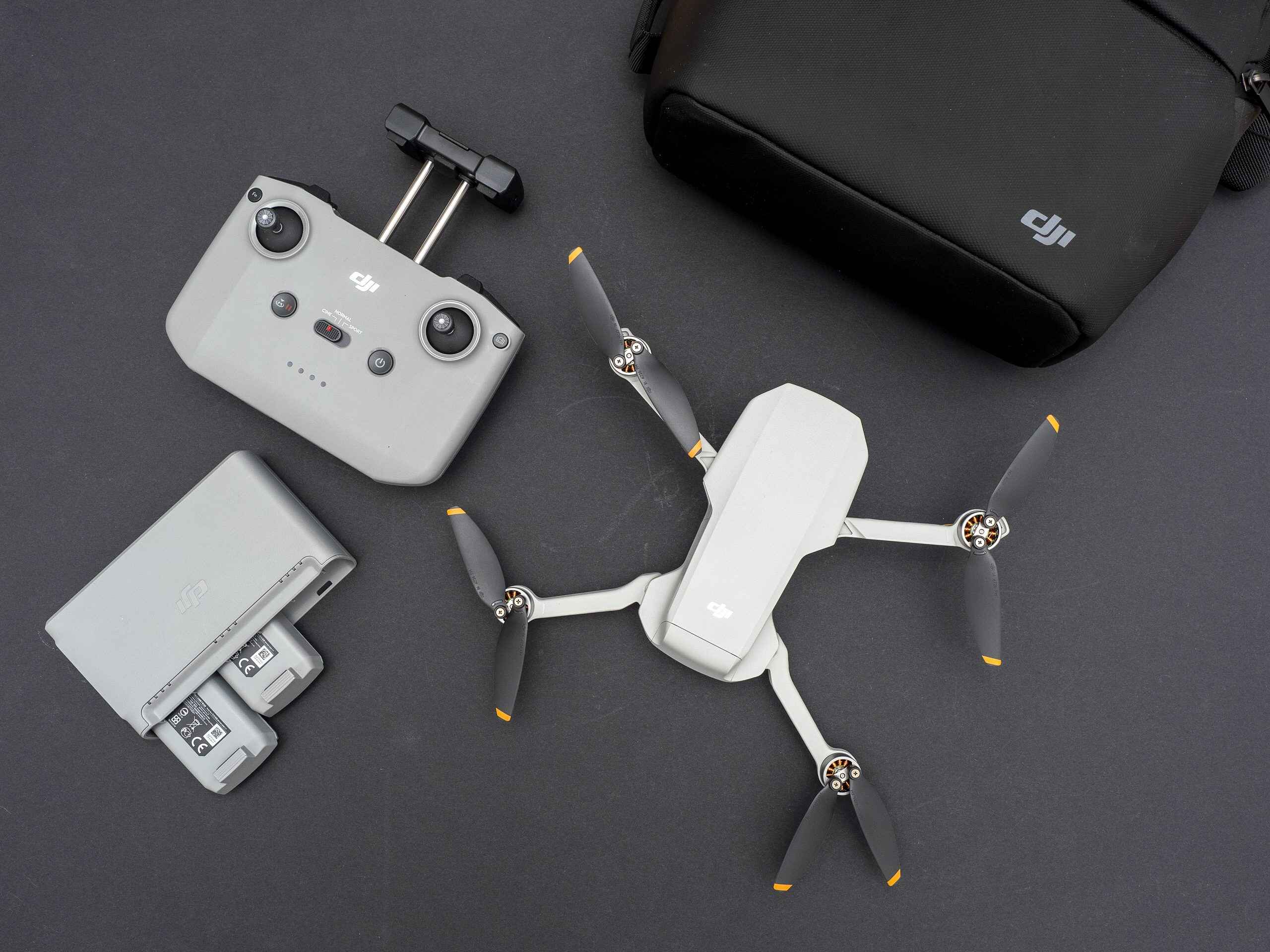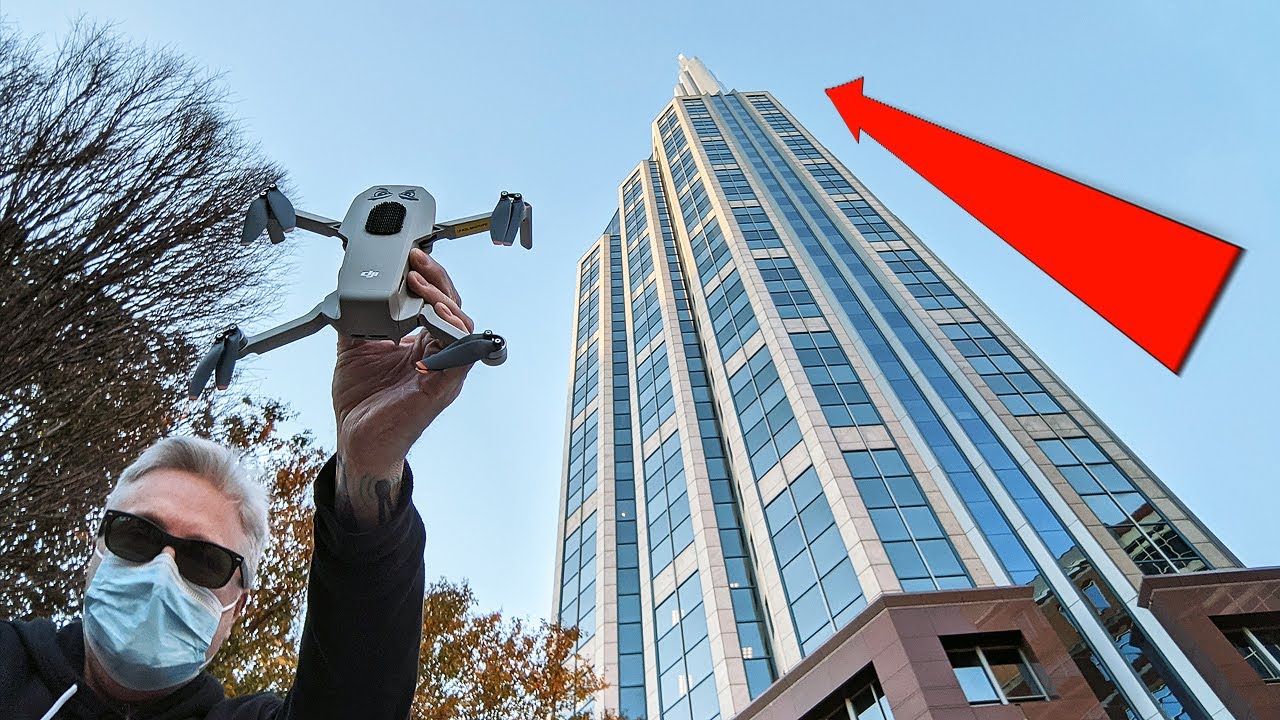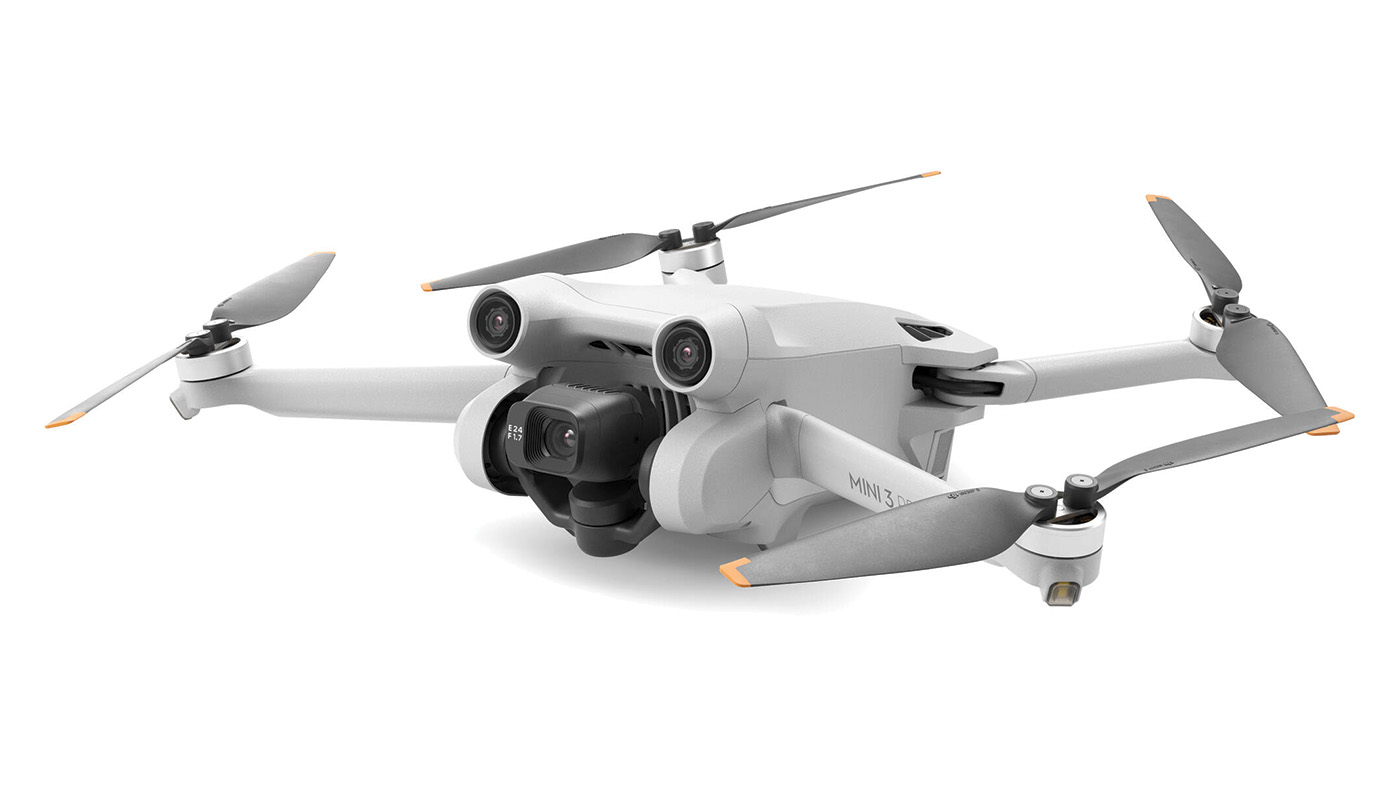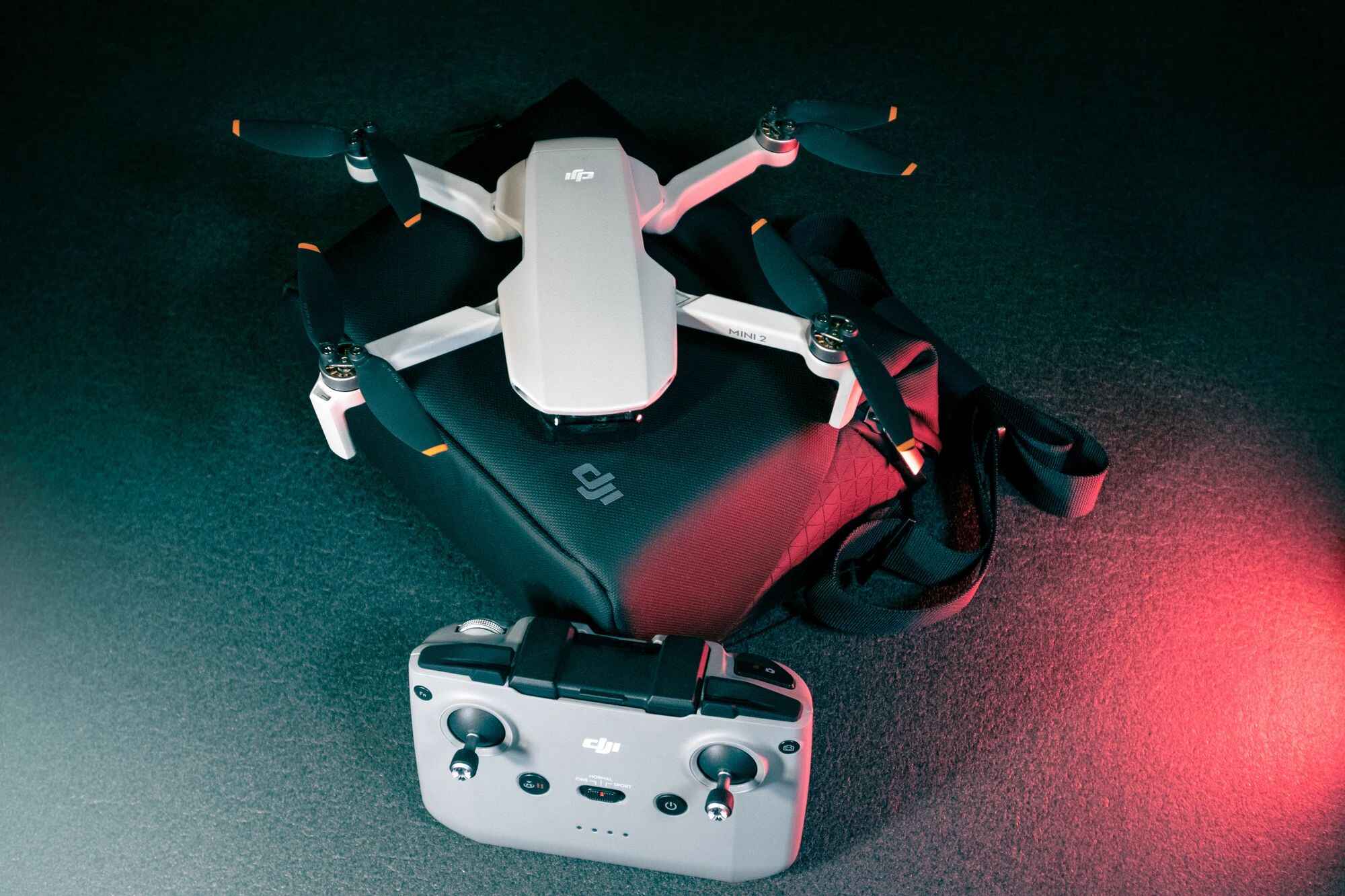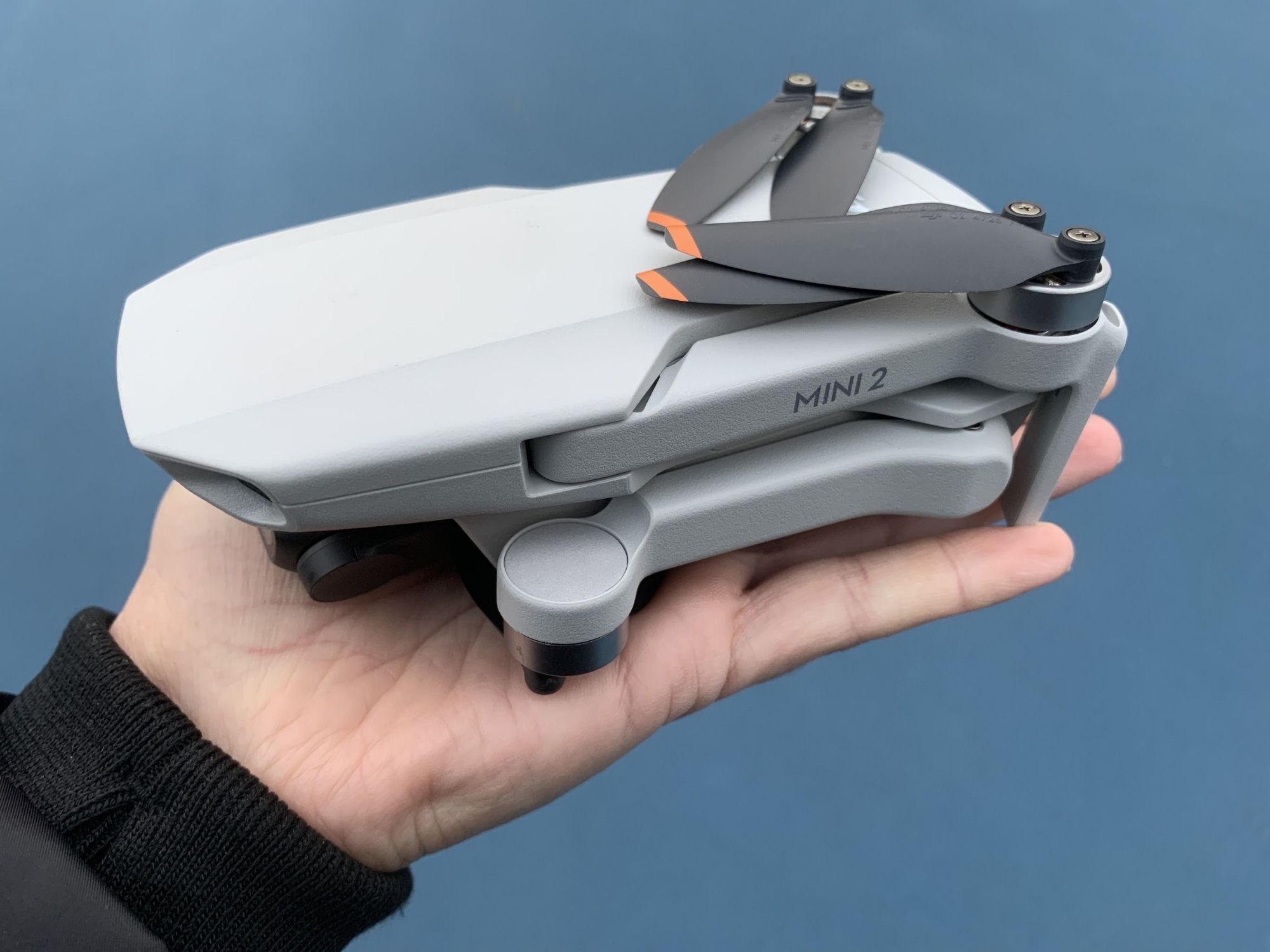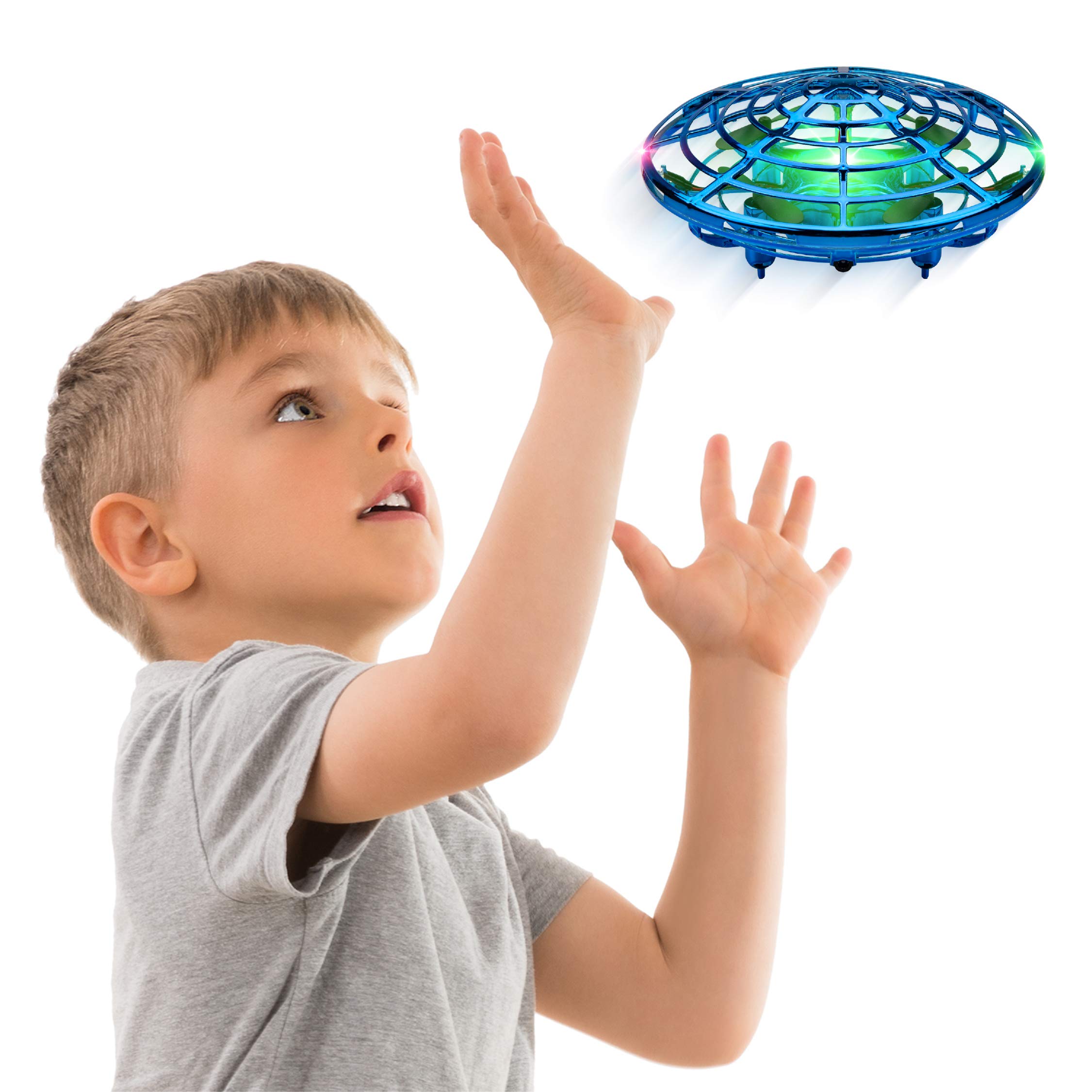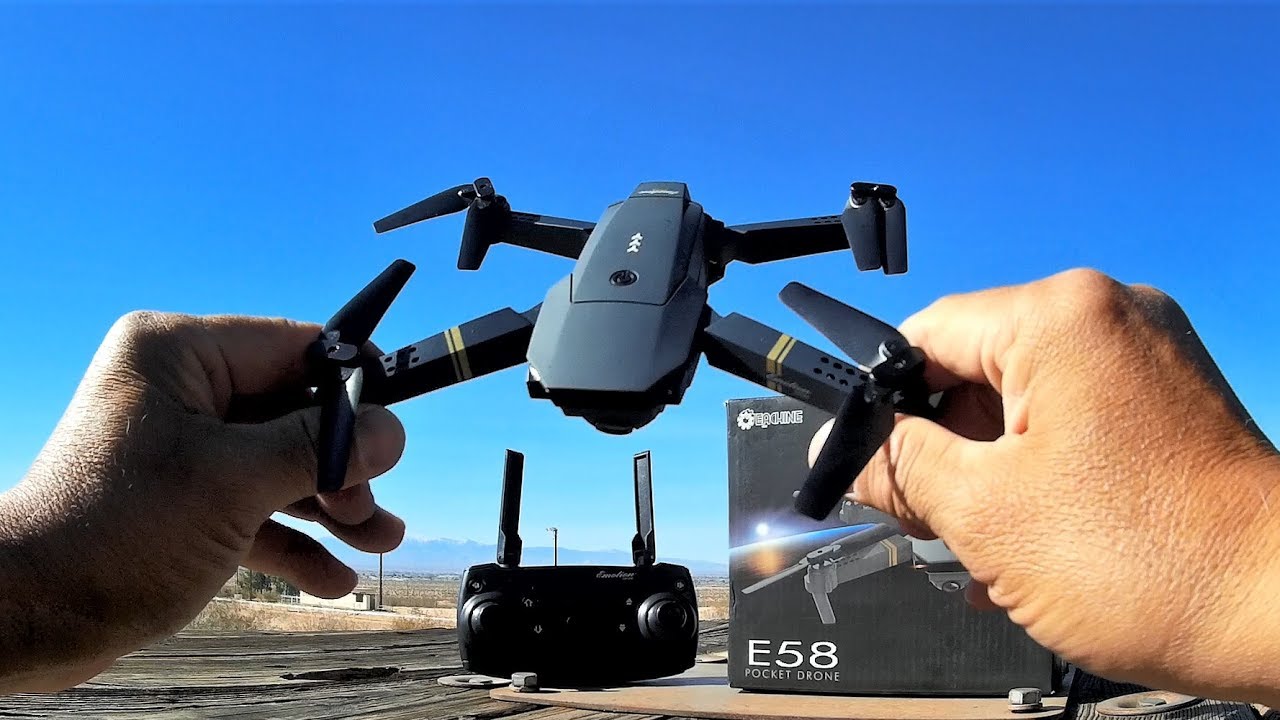Introduction
Welcome to the exciting world of flying mini drones! These small, lightweight devices are packed with powerful technology that allows you to experience the thrill of flight in a whole new way. Whether you are a beginner or have some experience with larger drones, flying a mini drone offers a unique and exhilarating challenge.
In this guide, we will take you through the essentials of flying a mini drone. From choosing the right drone to mastering the controls and performing basic maneuvers, we will provide you with all the information you need to take to the skies confidently. Whether you want to fly just for fun or capture stunning aerial photographs and videos, this guide will help you get started on your journey.
Flying a mini drone is not only a thrilling hobby but also a great way to capture breathtaking aerial footage. With their small size and maneuverability, mini drones allow you to navigate tight spaces and get unique perspectives that were once only possible with expensive and bulky equipment. Whether you are an aspiring photographer, videographer, or simply someone who loves exploring new horizons, flying a mini drone is a wonderful skill to have.
However, it’s important to note that flying a mini drone requires responsibility and adherence to safety guidelines. Understanding the controls, performing pre-flight checks, and practicing essential flight maneuvers are crucial to ensuring a safe and enjoyable flying experience. In this guide, we will walk you through each step of the process, providing valuable tips and techniques to help you become a skilled mini drone pilot.
So, if you’re ready to embark on this exciting adventure, let’s get started by choosing the right mini drone that suits your needs and preferences.
Choosing the Right Mini Drone
When it comes to choosing a mini drone, there are a few key factors to consider. These factors will ensure that you find a drone that suits your skill level, budget, and intended use. Let’s explore these factors in more detail:
1. Skill Level: If you’re a beginner, it’s best to start with a mini drone that is easy to fly and has features like altitude hold and headless mode. These features help stabilize the drone and make it easier to control. For more experienced pilots, there are advanced mini drones available with acrobatic flight modes and higher speed capabilities.
2. Budget: Mini drones come in a wide range of prices, so it’s important to set a budget before making a purchase. While it’s tempting to go for the cheapest option, keep in mind that cheaper drones may lack stability and durability. It’s worth investing a bit more to ensure a better flying experience and longer-lasting drone.
3. Features: Consider the specific features you want in a mini drone. Some drones come with built-in cameras for aerial photography and videography, while others prioritize agility and speed. Look for features like GPS, follow me mode, and obstacle avoidance if you have specific requirements.
4. Flight Time and Battery Life: Check the average flight time and battery life of the mini drone you’re interested in. Short flight times can be frustrating, especially if you’re planning to capture aerial footage or take extended flights. Consider getting extra batteries or a drone with longer flight time if this is a concern for you.
5. Size and Portability: Mini drones are known for their compact size and portability. Consider how easily the drone can be carried in a backpack or pocket, especially if you plan on taking it with you on outdoor adventures or travels.
Once you have considered these factors, you can start researching and comparing different mini drone models. Read reviews, watch videos, and gather as much information as possible to make an informed decision. Remember that choosing the right mini drone will greatly impact your flying experience, so take your time and select a drone that meets your needs and preferences.
In the next section, we will dive into understanding the controls of your mini drone, an essential step in becoming a proficient pilot.
Understanding the Controls
Before taking to the skies with your mini drone, it’s important to familiarize yourself with its controls. Understanding how each control affects the drone’s movement will help you fly with confidence and precision. Let’s break down the main controls of a mini drone:
1. Throttle: The throttle control is responsible for controlling the altitude or vertical movement of the drone. Pushing the throttle upward increases the drone’s altitude, while pulling it downward decreases it. It’s important to practice controlling the throttle smoothly to achieve a stable flight.
2. Pitch and Roll: The pitch control tilts the drone forward or backward, determining its horizontal movement. Pushing the control forward makes the drone move forward, while pulling it backward moves the drone backward. The roll control, on the other hand, tilts the drone sideways, enabling it to move left or right. Mastering pitch and roll is essential for maneuvering the drone in different directions.
3. Yaw: The yaw control rotates the drone clockwise or counterclockwise around its vertical axis. By using the yaw control, you can change the direction the drone is facing without changing its horizontal position. This control is particularly useful when you want to capture panoramic shots or turn the drone around quickly.
4. Trim: Mini drones often feature trim controls, which are used to fine-tune the drone’s stability. If you find that your drone is drifting to one side or is unstable in flight, you can use the trim controls to adjust its balance. Experiment with the trim controls to achieve optimal stability.
5. Additional Features: Depending on the model and brand of your mini drone, you may have access to additional features such as one-touch takeoff and landing, return-to-home, or even gesture controls. Take the time to familiarize yourself with these features and understand how to utilize them effectively.
To get comfortable with the controls, start by practicing in an open and spacious area away from obstacles or people. Gradually increase your flying skills by performing basic maneuvers, such as hovering, forward and backward flights, and simple turns. Take the time to practice and improve your control over the drone’s movements. Remember that practice makes perfect, and with time and dedication, you’ll become a skilled mini drone pilot.
Now that you have a good understanding of the controls, it’s time to move on to the next section: the pre-flight checklist. This will ensure that you are fully prepared before taking flight with your mini drone.
Pre-flight Checklist
Before you take your mini drone to the skies, it’s important to go through a pre-flight checklist to ensure a safe and successful flight. Following this checklist will help you identify any potential issues or concerns before launching your drone. Let’s go through the essential items on the pre-flight checklist:
1. Check the Batteries: Make sure that all batteries, including the drone’s battery and the controller’s batteries, are fully charged. Check for any signs of damage or corrosion that may affect the performance of the batteries.
2. Inspect the Drone: Examine your mini drone for any physical damage, loose components, or signs of wear and tear. Pay close attention to the propellers and ensure that they are securely attached and undamaged. If you notice any issues, it’s best to address them before taking flight.
3. Clear the Flight Area: Choose an open area with minimal obstacles for your drone flight. Remove any potential hazards such as trees, power lines, or people that could interfere with the flight. Ensure that you have enough space to maneuver the drone safely.
4. Check the Weather Conditions: Before flying, check the weather conditions. Avoid flying in strong winds, rain, or other adverse weather conditions that could jeopardize the safety of your flight. A clear and calm day is ideal for flying your mini drone.
5. Verify the Flight Regulations: Familiarize yourself with the local laws and regulations regarding drone flights in your area. Ensure that you are aware of any restrictions or guidelines that need to be followed during your flight. Respect privacy and avoid flying in restricted areas such as airports or government buildings.
6. Calibrate the Compass and GPS (if applicable): Some mini drones come with compass and GPS features. If your drone has these capabilities, it’s important to calibrate them before each flight. Follow the manufacturer’s instructions for calibrating the compass and ensure that the GPS signal is strong.
7. Prepare Your Controller: Ensure that your controller is fully functional and connected to the drone. Check that the control sticks move smoothly and that all buttons and switches are working correctly.
8. Verify App and Firmware Updates: If your mini drone connects to a smartphone app, ensure that the app is updated to the latest version. In addition, check if there are any firmware updates available for your drone and controller. Keeping your equipment up to date helps ensure optimal performance and safety.
By going through this pre-flight checklist, you’ll be well-prepared for a safe and enjoyable flight with your mini drone. Remember that thorough preparation is essential for a successful flying experience. Now, let’s move on to the next section, where we’ll explore the process of taking off and landing your drone.
Taking Off and Landing
Taking off and landing your mini drone may seem like a simple process, but it’s important to approach it with caution and precision. Proper technique during these critical moments of flight will ensure a safe and controlled operation. Let’s explore the steps involved in taking off and landing your mini drone:
1. Taking Off: Before taking off, make sure that your mini drone is properly calibrated, and all pre-flight checks have been completed. Ensure that the flight area is clear of any obstacles or hazards. To take off, gently push the throttle control upward while holding the drone level. Gradually increase the throttle until the drone lifts off the ground. Maintain a steady hand on the controller and adjust the throttle as needed to achieve a stable hover.
2. Hovering: Once the drone is in the air, practice hovering at a steady altitude. Use small adjustments to the throttle and control sticks to maintain a stable hover. This will help you gain confidence in controlling the drone’s position and maintain stability in mid-air.
3. Basic Movements: Once you’re comfortable with hovering, practice moving the drone in different directions. Use the pitch, roll, and yaw controls to make the drone fly forward, backward, left, and right. Remember to make small, gradual adjustments and avoid sudden or jerky movements. Keep practicing these basic maneuvers to improve your control and coordination.
4. Landing: Landing your mini drone is just as crucial as taking off. Find a suitable landing spot away from obstacles and hazards. Slowly reduce the throttle to descend the drone towards the ground. Keep your eyes on the drone and adjust the throttle to ensure a gentle and controlled landing. Avoid landing on uneven or unstable surfaces that could cause the drone to tip or crash. Once the drone is safely on the ground, reduce the throttle to zero, and power off the drone.
Remember, practice makes perfect when it comes to taking off and landing your mini drone. Start with low altitudes and gradually increase your flying skills as you gain more experience. Be patient and take the time to master these fundamental techniques before moving on to more advanced flight maneuvers.
Now that you’re familiar with the process of taking off and landing, let’s move on to the next section, where we’ll explore basic flight maneuvers to further enhance your piloting skills.
Basic Flight Maneuvers
Once you have mastered the basics of taking off, hovering, and landing your mini drone, it’s time to expand your piloting skills with some basic flight maneuvers. These maneuvers will allow you to navigate your drone with more precision and control. Let’s explore some essential flight maneuvers you can practice:
1. Ascending and Descending: Start by practicing smooth ascents and descents. Increase the throttle to ascend and decrease it to descend. Maintain a steady hand on the controls to achieve a controlled and stable vertical movement. Practice ascending and descending at different speeds to become comfortable with controlling your drone’s altitude.
2. Forward and Backward Flight: Fly your mini drone forward and backward by using the pitch control. Push the pitch control forward to make the drone move forward, and pull it backward to make it move backward. Practice flying in a straight line and gradually increase your speed as you gain confidence. Ensure that you maintain a safe distance from obstacles and always keep your drone in sight.
3. Left and Right Turns: Use the roll control to make your mini drone turn left and right. Tilt the drone to the left to make a left turn, and tilt it to the right to make a right turn. Start with gentle turns and gradually increase the angle as you become comfortable. Remember to coordinate the roll control with the yaw control to make smooth and controlled turns.
4. Circling: Practice circling maneuvers by combining pitch, roll, and yaw controls. Tilt the drone slightly to one side using the roll control and apply yaw control in the opposite direction to create a circular path. Experiment with different speeds and radii to achieve smooth and coordinated circles.
5. Figure-Eight Pattern: Once you have mastered individual turns and maneuvers, challenge yourself by flying your mini drone in a figure-eight pattern. Begin by flying straight, then execute a smooth left turn followed by a smooth right turn to complete the figure-eight shape. Focus on maintaining a fluid and continuous movement throughout the pattern.
It’s important to practice these basic flight maneuvers regularly to develop your piloting skills. Start with slow and deliberate movements, and gradually increase your speed and precision as you become more comfortable. Remember to always fly within the limits of your drone and obey local laws and regulations.
In the next section, we will delve into advanced techniques that will take your mini drone piloting skills to the next level.
Advanced Techniques
Once you have a solid grasp of the basic flight maneuvers and are comfortable controlling your mini drone, it’s time to take your piloting skills to the next level with some advanced techniques. These techniques will allow you to perform more complex and impressive maneuvers. Let’s explore some of the advanced techniques you can practice:
1. Flips and Rolls: Many mini drones come with acrobatic flight modes that enable you to perform flips and rolls in mid-air. To execute a flip or roll, activate the acrobatic mode on your drone and use the appropriate control inputs. For example, to perform a forward flip, push the pitch control forward and quickly move it backward. Practice these maneuvers in an open area to avoid any collisions or crashes.
2. Precision Flying: Challenge yourself by practicing precision flying. Choose a specific target or point in the air and try to fly your drone directly towards it. Focus on maintaining a steady and controlled flight as you approach the target. This technique will help improve your hand-eye coordination and enhance your ability to navigate tight spaces with accuracy.
3. Banked Turns: Instead of making simple left or right turns, try executing banked turns to add style and flair to your flying. To perform a banked turn, tilt your drone more aggressively in the desired direction while maintaining a smooth and coordinated turn. This technique creates a dynamic and visually appealing flight path.
4. Flights Modes and Intelligent Features: Explore the various flight modes and intelligent features available on your mini drone. Some drones offer features like follow-me mode, orbit mode, and waypoint navigation. Experiment with these features to capture unique and sophisticated shots or perform complex flight patterns with ease.
5. Wind Flying: As you gain more experience, try flying your mini drone in different weather conditions, including windy conditions. Flying in the wind presents additional challenges, such as maintaining stability and adjusting for wind gusts. Practice flying in various wind speeds and directions to develop your skills and confidence in handling adverse weather conditions.
Remember, mastering advanced techniques requires patience, practice, and a thorough understanding of your mini drone’s capabilities. Always prioritize safety and be aware of your surroundings while attempting these maneuvers. Push your limits gradually and never attempt maneuvers that are beyond your skill level or the capabilities of your drone.
In the next section, we will share some valuable tips to help you achieve successful and enjoyable flights with your mini drone.
Tips for Successful Flying
To ensure successful and enjoyable flights with your mini drone, it’s important to keep in mind some valuable tips. These tips will help you maximize your flying experience, improve your piloting skills, and prevent common mistakes. Let’s explore some key tips for successful flying:
1. Start Slow and Gradual: If you’re a beginner, start by flying your mini drone in a slow and controlled manner. Get comfortable with the basic controls and movements before attempting more advanced maneuvers. As you gain experience and confidence, you can gradually increase your speed and try more challenging flying techniques.
2. Practice in Open Spaces: Whenever possible, practice flying your mini drone in open and spacious areas away from buildings, trees, and people. This will minimize the risk of collisions and provide you with ample space to maneuver and practice different flight maneuvers.
3. Maintain Line of Sight: Always keep your mini drone within your line of sight while flying. This helps you maintain better control and awareness of your drone’s position and surroundings. Avoid flying beyond your visual range or in areas with obstructed views.
4. Respect Privacy and Regulations: Familiarize yourself with local laws, regulations, and privacy guidelines regarding drone flights in your area. Always fly in designated areas and avoid flying over private properties without proper consent. Respect the privacy of others and prioritize safety at all times.
5. Fly in Optimal Weather Conditions: Choose clear and calm weather to fly your mini drone. Windy conditions or rain can affect the stability and flight performance of your drone. Be aware of weather conditions and avoid flying in adverse weather conditions that may compromise the safety of your flight.
6. Learn to Read Your Drone’s Manual: Every mini drone is unique, so take the time to read the manual provided by the manufacturer. Understanding the specific features, functions, and flight capabilities of your drone will help you maximize its potential and fly more efficiently.
7. Be Mindful of Battery Life: Keep an eye on your drone’s battery life during flights. It’s best to land and recharge the battery well before it reaches critically low levels. Maintaining a healthy battery level ensures a safe return to the ground and prolongs the overall lifespan of your drone’s battery.
8. Keep Spare Parts and Accessories: To avoid interrupted flying sessions, consider keeping spare propellers, batteries, and other essential accessories for your mini drone. Accidents can happen, and having replacement parts on hand will minimize downtime and allow you to continue flying without interruptions.
By following these tips, you’ll be able to enhance your flying experience, improve your piloting skills, and ensure a safe and successful flight each time you take to the skies with your mini drone.
In the next section, we’ll cover some common troubleshooting techniques to help you address any issues you may encounter while flying your mini drone.
Troubleshooting Common Issues
While flying your mini drone, you may encounter some common issues that can disrupt your flight experience. It’s important to be prepared and know how to troubleshoot these issues to get your drone back in the air quickly. Let’s take a look at some common problems and their solutions:
1. Drone Not Connecting to Controller: If your drone is not connecting to the controller, check the battery levels of both the drone and the controller. Ensure that they are powered on and within range of each other. Try recalibrating the drone and controller to establish a solid connection.
2. Drifting or Unstable Flight: If your drone is drifting or experiencing unstable flight, check if all propellers are securely attached and undamaged. Use the trim controls on your drone to adjust its stability. If the issue persists, recalibrate the drone’s gyroscope and compass.
3. Short Flight Time: If you are experiencing shorter flight times than expected, check if the drone’s battery is fully charged. Reduce the weight of the drone by removing any unnecessary accessories or attachments. Fly in calm weather conditions and avoid aggressive flying maneuvers to conserve battery power.
4. Losing Signal or Range: If you’re losing signal or the range of your drone seems limited, check for any objects or interference between the drone and the controller. Avoid flying near strong Wi-Fi signals or other sources of radio frequency interference. Ensure that the controller’s antennas are fully extended and properly positioned.
5. Erratic Controls: If your drone’s controls are acting erratically, recalibrate the controller and ensure that you’re not experiencing any interference from other devices. Check the controller’s batteries and replace them if necessary. Keep the drone within a close range to maintain a reliable connection.
6. Camera Issues: If your mini drone has a built-in camera and you’re experiencing issues with it, ensure that the memory card is properly inserted and has enough space for recording. Check the camera settings and make sure it’s set to the desired resolution and mode. Clean the camera lens to avoid blurry footage or images.
7. GPS or Compass Problems: If your drone has GPS or compass features and you’re experiencing issues with them, recalibrate the compass and ensure that the drone is in an open area with a strong GPS signal. Avoid flying near metal objects or strong magnetic fields that can interfere with the drone’s navigation system.
If you’re unable to resolve any issues or if you encounter a problem that seems beyond your control, refer to the manufacturer’s manual or contact customer support for further assistance. Remember to always prioritize safety and follow proper troubleshooting protocols to ensure a successful and enjoyable flying experience with your mini drone.
Now that you’re equipped with troubleshooting knowledge, let’s move on to the concluding section, where we’ll wrap up our guide to flying a mini drone and highlight the key takeaways from our discussion.
Conclusion
Congratulations on completing this comprehensive guide to flying a mini drone! We have covered everything from choosing the right drone to mastering the controls, performing basic flight maneuvers, and troubleshooting common issues. By following the tips and techniques outlined in this guide, you can confidently take to the skies and enjoy an exhilarating flying experience with your mini drone.
Remember that flying a mini drone is not just about the thrill of flight but also about responsibility and safety. Always adhere to local laws and regulations regarding drone flights, respect privacy, and prioritize the safety of yourself and others. Regular practice and patience are key to becoming a skilled pilot, so make sure to dedicate time to hone your flying skills and explore new techniques.
Whether you are flying for recreational purposes, capturing stunning aerial footage, or exploring new creative possibilities, flying a mini drone opens up a whole new world of possibilities. Embrace the challenges, enjoy the breathtaking views, and continue pushing your limits to become a proficient and confident mini drone pilot.
Lastly, always keep in mind that flying a mini drone is an ever-evolving journey. Stay up to date with the latest advancements in drone technology, follow industry news and trends, and continue learning and improving your skills. The more you fly, the more you’ll discover new ways to enhance your flying experience and capture stunning moments from unique perspectives.
So, get out there, fly responsibly, and embrace the joy of piloting your mini drone. Enjoy the freedom, creativity, and excitement that flying a mini drone has to offer. Happy flying!







